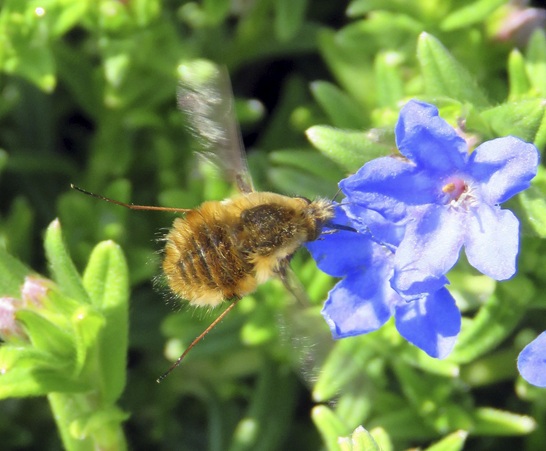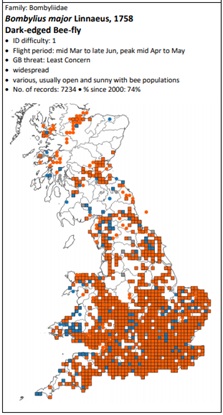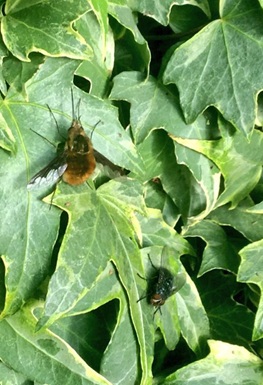Flies are not generally liked. Flies don’t bring out the public to help with garden wildlife surveys. Flies are to just be killed when they enter our homes. All of these statements are true and utterly unfair. Flies are some of the most amazing creatures on our planet and hopefully 2019 and the Year of the Fly will persuade many folks that this is indeed the case.
I have had the privilege to work the Natural History Museum in London for over 10 years, dedicating this time to these wee beasties and all who work with them. I have travelled round the world collecting them, and I have the world’s collection to learn from at my fingertips. I will get side-tracked regularly by not only the specimens but by the visitors to the collection who tell me stories of the flies – their behaviour, their morphology and their impact.
But you don’t need to go far to be amazed by flies. The British species list has over 7000 species on it – to put that into context there are only 6100 mammals globally – and our British Collection reflects this diversity. And London does not fare badly when it comes to seeing some gems.
My garden in South London last year caused me to be late to work many, many times thanks to one little beauty – the Dark-edged Bee Fly Bombylius major (Fig.1). The fluffy flying narwhal of the air.

Figure 1. Dark-edged Bee Fly Bombylius major , feasting on nectar and pollinating as it goes. (Image courtesy of Steve Falks flickr site)
This wonderful creature is one of the most attractive species of animal in the UK, and it has an equally interesting life history to match those looks. And it is found across the UK (figure 2), thankfully my garden included!

Figure 2 the UK distribution of Bombylius major (from the Soldierflies and Allies Recording Scheme)
As some of the earliest flies to emerge as adults in the spring, they announce the arrival of warmer times to the world with their ‘twerking’ (if you do not know this word, be prepared for some rather raunchy behaviour when searching for its definition) and their egg hurling. Yes, not the greatest advocate of parental care, the females collect sand/dust from the ground and store this in an abdominal pouch for when she needs to coat her eggs in it. These eggs now have a cover to help prevent desiccation for when she throws them into the burrows of solitary bees, and the eggs also gain camouflage and a little extra weight from this coating. Once hatched the larvae undergoes two different morphological phases; the first is the ‘toddler’ stage where a highly active larva crawls deep into the burrows and then, if necessary, it waits till the bee larvae are almost full size. At this point it enters the ‘teenage’ phase, where it just lies there feeding from the bee larvae. Yes, I admit that this is not beneficial for the bee but these species have evolved alongside each other with no evidence of bee flies being overly detrimental to bee populations. And don’t worry about the loss of pollinators by a lack of bees. The adults of the genus Bombylius, with their long mouthparts, are good little pollinators, favouring some of the longer tubed flowers such as Borages, although more research needs is needed especially in the UK and Europe. I have patches of exposed soil, with many forget-me-knots as well as a rough and tumbled lawn that is mined by the bees. All of this led last year to an explosion of the gorgeous bee-flies. I was most excited to see 10 one morning (Fig 3). I was also very late to work that day.

Figure 3 One of the many bee flies (and friend) found in my garden last year.
So this year we want to carry on from the last years efforts by the Soldierflies and Allies recording scheme and ask for all to get involved with the #BeeflyWatch recording event, to help us to update our understanding of these insects’ emergence times and distribution. The Dipterists Forum and Buglife will be highlighting these fabulous creatures and encouraging all to add records (with links provided for how to do this). From both my garden and that of The Natural History Museum’s wildlife garden I too will be recording my observations, and encouraging everyone else to get involved. Knowing me I may tweet one or two of these flies but I know that I won’t be alone so please do follow the #BeeflyWatch hash tag.
This will be one of the many activities focusing on flies that have been planned for the Year of the Fly. Check out the Dipterists Forum website for events in London and further afield including museum collections visits, talks, tours and activities for all of the family.
Dr Erica McAlister is a curator of Diptera at the Natural History Museum and has recently published a book, The Secret Life of Flies. Thank you, Erica for this inspiration to go out and undertake some fascinating citizen science!

